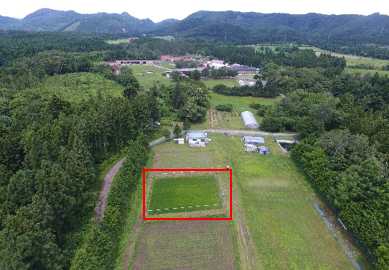Up to 30% increased yield in transgenic rice overproducing Rubisco
 The writer: Keiki ISHIYAMA
The writer: Keiki ISHIYAMA
Rice is the most important food crop in the world, reaching 25% of all human food. We produced a series of transgenic rice plants expressing 130% wild-type levels of Rubisco-the key enzyme of photosynthesis, and showed that the transgenic rice plants exhibit 20-30% increased yields with improved N-use efficiency for increasing biomass production when receiving sufficient N fertilization in an experimental paddy field. This is the world’s first example of a field experiment demonstrating improvement in photosynthesis linked to yield increase due to a higher N use efficiency in a major crop.
These results have been published in the February Issue of Nature Food.
Journal:Nature Food 1: 134-139 (2020) doi: 10.1038/s43016-020-0033-x
Title:Transgenic rice overproducing Rubisco exhibits increased yields with improved nitrogen-use efficiency in an experimental paddy field.
Authors:Dong-Kyung Yoon*, Keiki Ishiyama*, Mao Suganami, Youshi Tazoe, Mari Watanabe, Serina Imaruoka, Maki Ogura, Hiroyuki Ishida, Yuji Suzuki, Mitsuhiro Obara, Tadahiko Mae & Amane Makino** *The authors contributed equally. **Corresponding author
(Photo) The Isolated Farm for Genetically Modified Plants of the Field Center, Tohoku University. (Figure) Grain (brown rice) yield of Rubisco-overproduced (red column) , Rubisco-reduced (blue column) and wild-type (black column) rice plants grown with different amounts of N fertilization for 4 years from 2016 to 2019.





